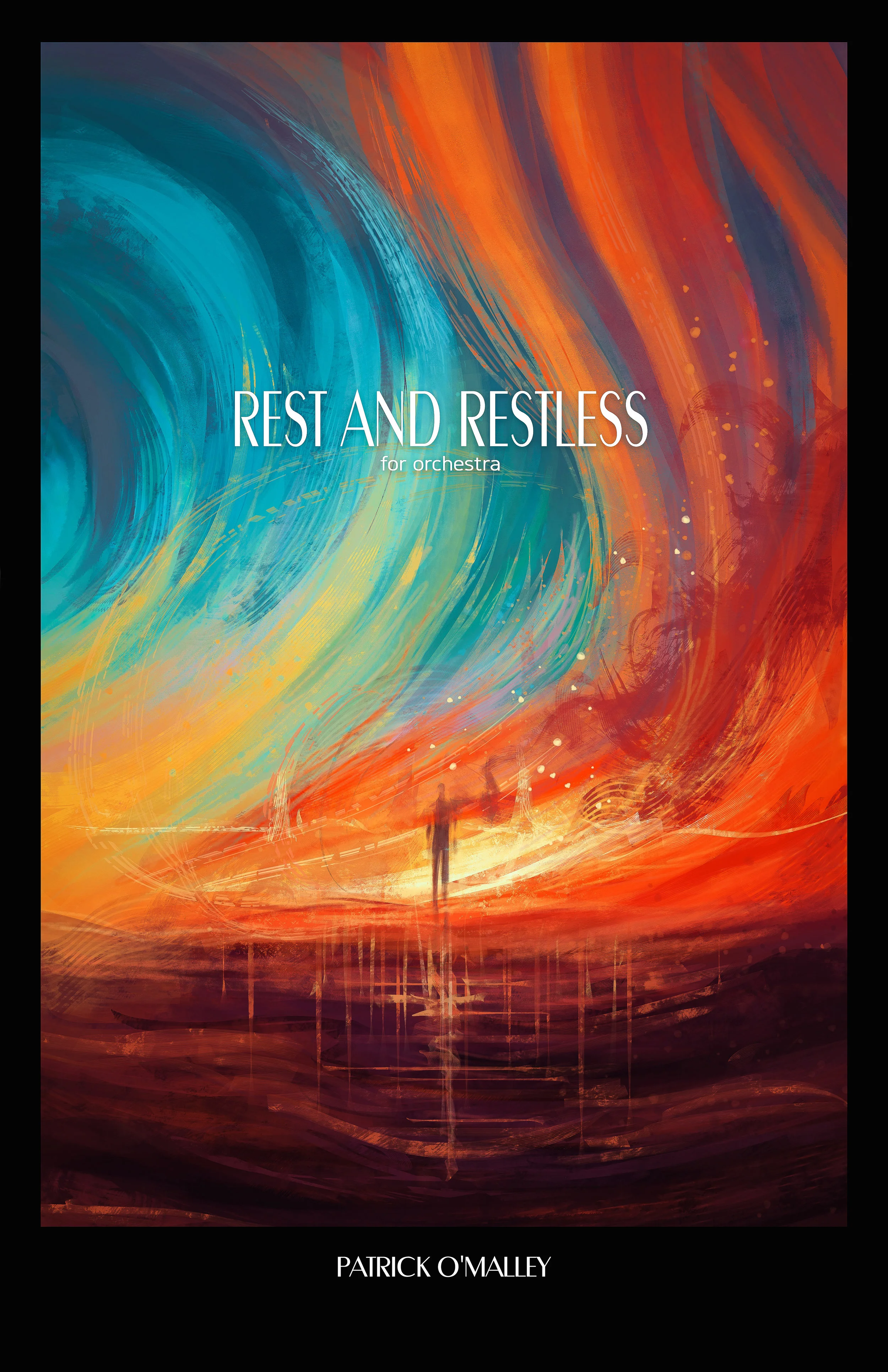Premiered by the USC Thornton Symphony, conducted by Don Crockett:
Instrumentation - Full Orchestra
2,2(2dEH),2(2dBCl),2. 4331. 2perc. Hp, Pno, Strings
Selected Performances
Ft. Wayne Philharmonic, Andrew Constantine cond.
Minnesota Orchestra, Osmo Vänskä cond.
New Jersey Symphony Orchestra, Cristian Macelaru cond.
Albany Symphony Orchestra, David Allan Miller cond.
Awards
New York Youth Symphony “First Music” Winning Entree
New England Philharmonic Call-for-Scores Finalist
Minnesota Orchestra Composers Institute Winner
New Jersey Symphony Orchestra Cone Institute Winner
Albany Symphony’s “First Draughts” Readings at the American Music Festival Winner
Program Note
Several of my recent pieces concern themselves with dichotomies, or pairs of ideas that push and pull against each other. I find that I have difficulty writing unless I have at least two opposing concepts that I can somehow “compose between.” Rest and Restless carries this process out with regards to emotional states – I would describe the piece as an “emotional landscape.” The music slowly alternates, pendulum-like, from low angst-broodings to brighter hopes, back and forth, but without letting either mood "win" over the other. These forces eventually come to a head in a tutti explosion, followed by a stark coda that, to me, feels either optimistic or dejected, depending on what mood I am in. Whenever I try to write this program note my mind keeps coming back to an image of looking out my bedroom window in Los Angeles at the evening clouds, my imagination being ignited by the simultaneously serene and troubled shapes of grey. Perhaps the music reflects that fantasy in some emotional fashion.
The piece was originally composed as a solo for double bass for a concert I was giving at university. Without any significant pre-compositional preparations, I set about writing the piece with only a few simple goals in mind: that the piece would be overtly expressive yet interesting to listen to, that it would be manageable for a player to learn quickly, and that it would demand a diverse range of a playing techniques from the single instrument. My decision to orchestrate the piece was based on the impression that the almost constant double stops and high range harmonics on the bass created a texture interesting enough to hear with an orchestral palate. I have tried to preserve the feeling of low, open strings throughout the piece, while adding a greater variety of timbres and layers to the melodic passages.

